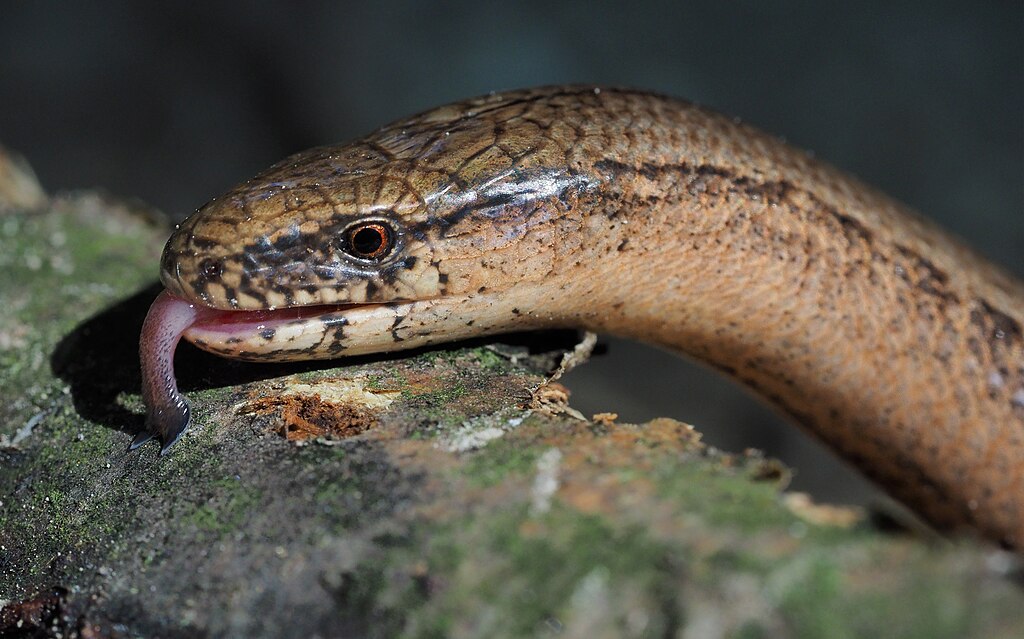In the hidden world beneath our garden waste, a fascinating reptile has adapted to a life most of its relatives would avoid. The slow worm (Anguis fragilis), despite its serpentine appearance, is not actually a snake at all, but a legless lizard with remarkable adaptations for burrowing through decomposing vegetation. These shy, gentle creatures have developed a special relationship with human gardening practices, particularly finding sanctuary in the warm, nutrient-rich environment of compost heaps. Their presence often goes unnoticed, yet these beneficial animals play an important role in garden ecosystems while leading lives that challenge our understanding of reptilian behavior.
The Mistaken Identity: Not a Snake After All
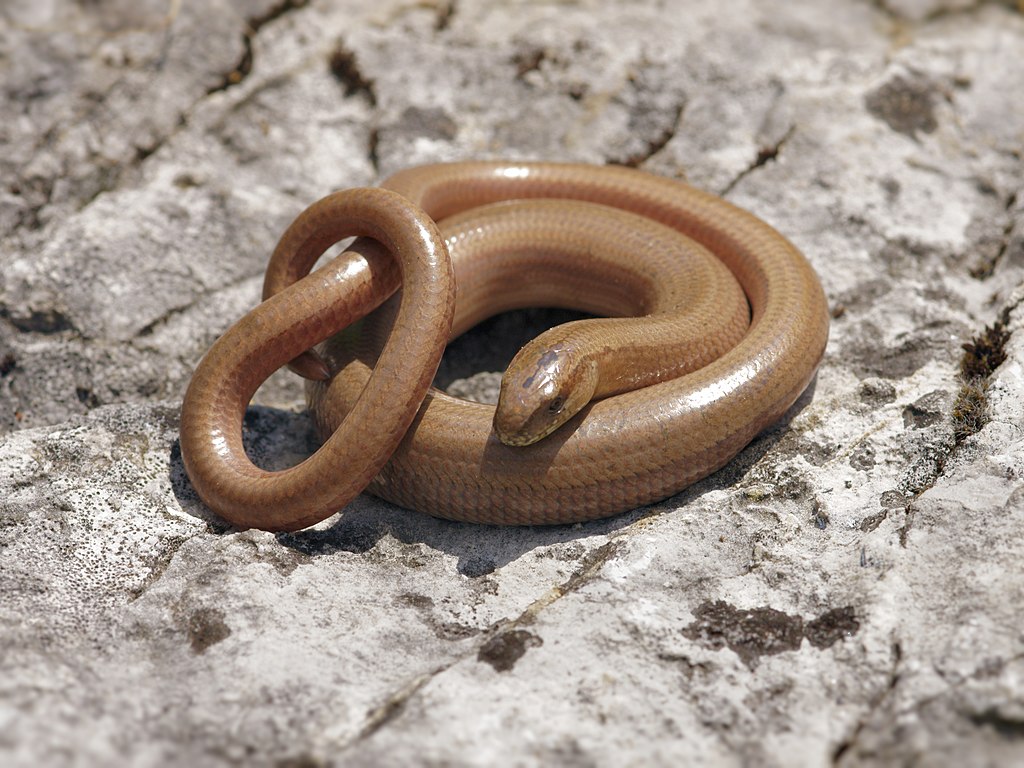
The slow worm, despite its snake-like appearance, is actually a legless lizard belonging to the family Anguidae. Unlike true snakes, slow worms possess movable eyelids, visible ear openings, and can drop their tails when threatened—a defensive strategy known as caudal autotomy that’s common in lizards but absent in snakes. They also differ from snakes in their jaw structure, which isn’t designed to unhinge and swallow large prey whole. These distinctive anatomical features reveal their true evolutionary history as lizards that gradually lost their limbs, rather than being true serpents. The confusion is understandable to the casual observer, as their smooth, cylindrical bodies averaging 40-50 centimeters in length create a convincing snake-like silhouette.
Physical Characteristics and Adaptations

Slow worms possess several physical adaptations that make them perfectly suited for their burrowing lifestyle in compost and loose soil. Their bodies are covered in smooth, shiny scales that facilitate movement through tight spaces, while their streamlined shape allows efficient tunneling with minimal resistance. Most slow worms display a copper or bronze coloration, though males sometimes demonstrate blue spotting and females often have dark sides and a black vertebral stripe. Their heads are relatively small and blunt, with no distinct neck—another adaptation that aids in pushing through substrate. Perhaps most importantly, their muscular bodies have evolved to apply force evenly along their length, creating the wave-like locomotion necessary for “swimming” through decomposing matter and soil without the need for limbs.
The Compost Heap Habitat: A Perfect Microcosm
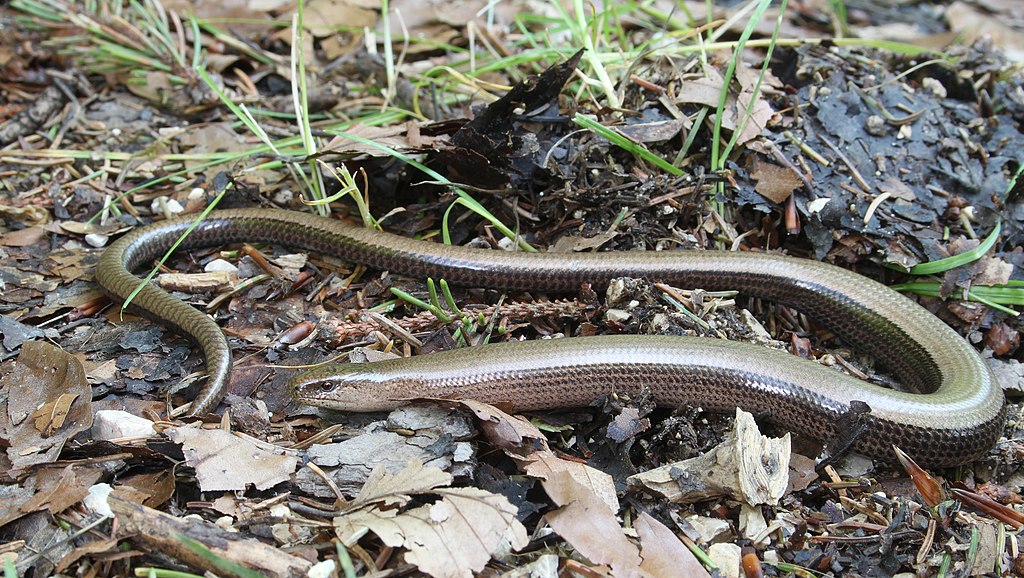
Compost heaps represent an ideal microhabitat for slow worms, offering numerous advantages that support their unique ecological needs. The decomposition process within these piles naturally generates heat, creating a warm environment that helps these ectothermic animals regulate their body temperature even during cooler weather. This warmth extends their active season and accelerates their metabolic processes, including digestion and reproduction. The loose, friable structure of composting material allows easy movement and provides numerous hiding places, offering protection from predators such as birds, cats, and hedgehogs. Additionally, compost heaps attract a smorgasbord of invertebrates—including slugs, worms, insects, and their larvae—which constitute the slow worm’s preferred diet. This combination of safety, warmth, and abundant food makes compost heaps one of the most attractive habitats in human-modified landscapes.
Dietary Preferences and Feeding Behavior
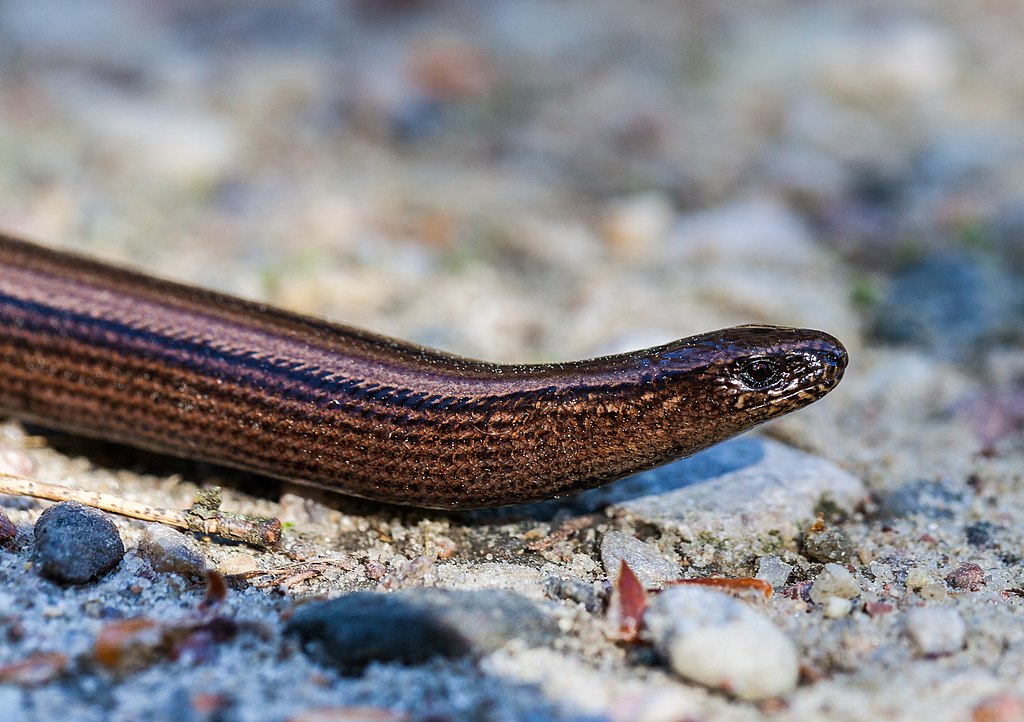
Slow worms are specialized predators with a diet primarily consisting of soft-bodied invertebrates found in abundance within decomposing organic matter. Their particular fondness for slugs and their eggs makes them valuable allies to gardeners, as they help control these common garden pests naturally. When hunting, slow worms use a combination of visual cues and their excellent sense of smell, flicking their tongues to sample airborne chemical particles. Unlike many snakes, they don’t constrict or inject venom, instead seizing prey with their small but sharp teeth and powerful jaws. Their feeding pattern typically involves more frequent consumption of smaller prey items rather than occasional large meals, a strategy well-suited to the steady supply of small invertebrates found in compost environments.
Reproduction and Life Cycle
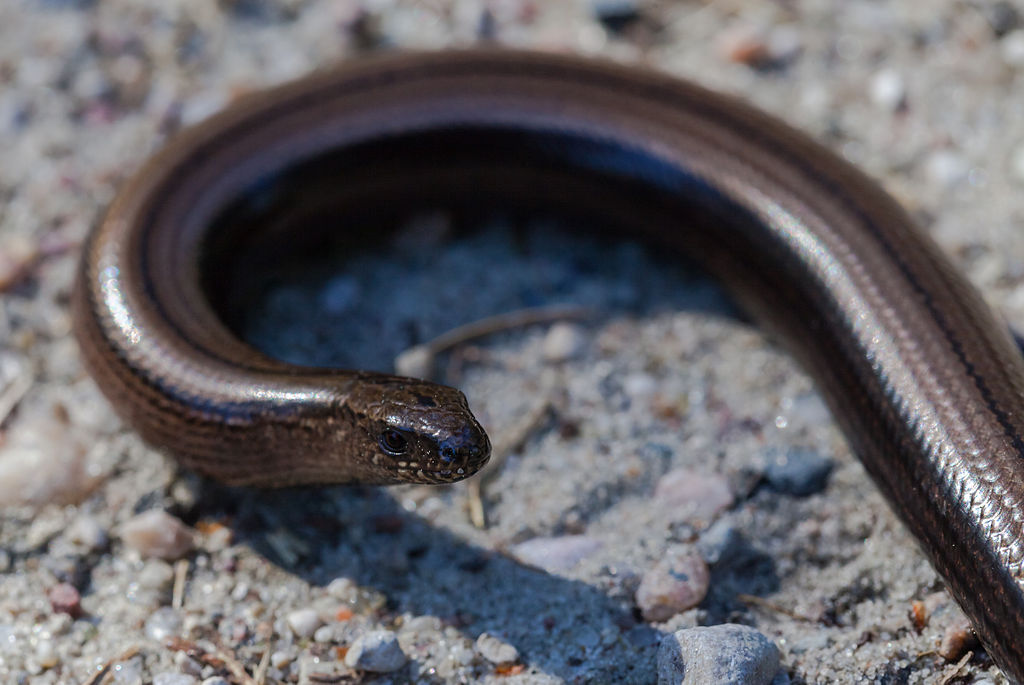
The reproductive biology of slow worms sets them apart from most other reptiles in fascinating ways. Unlike egg-laying snakes, slow worms are ovoviviparous, meaning females retain fertilized eggs within their bodies until they hatch, then give birth to live young—typically 6-12 offspring per litter. The gestation period lasts an impressive 3-4 months, during which pregnant females often seek out sunny spots in or near compost heaps to maximize their body temperature. Mating typically occurs in spring after emergence from winter hibernation, with births taking place in late summer or early autumn. Newborn slow worms are independent from birth, measuring approximately 7-10 centimeters and displaying a striking golden coloration that darkens with age. Remarkably, these reptiles are exceptionally long-lived, with documented lifespans exceeding 30 years in favorable conditions.
Cold Weather Survival Strategies
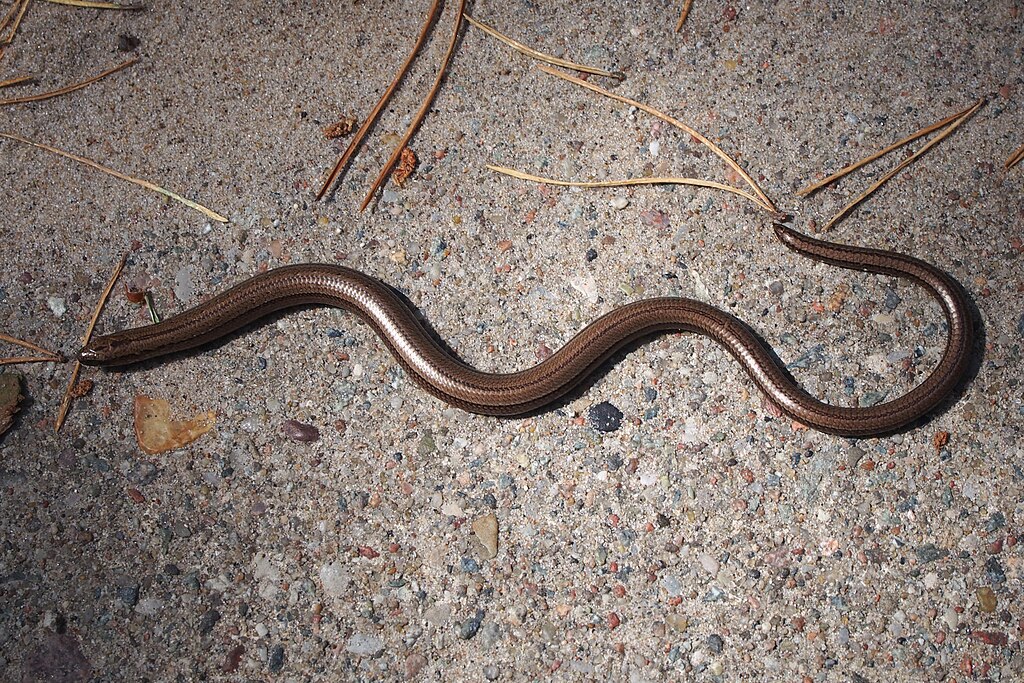
As the temperature drops in autumn, slow worms prepare for the coming winter through behavioral and physiological adaptations. Unlike their warm-weather activity, which includes basking and active hunting, cold weather triggers a shift toward hibernation as their metabolic rate dramatically decreases. They typically seek deep, insulated locations that won’t freeze, with the lower layers of large compost heaps providing ideal hibernacula. These reptiles often hibernate communally, with multiple individuals sharing the same protected space, creating small aggregations that help maintain slightly higher temperatures through collective body heat. Their remarkable cold tolerance is further enhanced by natural physiological antifreeze compounds that protect their cells from freeze damage. Hibernation generally lasts from October through March in temperate regions, though exact timing varies with local climate conditions.
Benefits to Gardens and Ecosystems
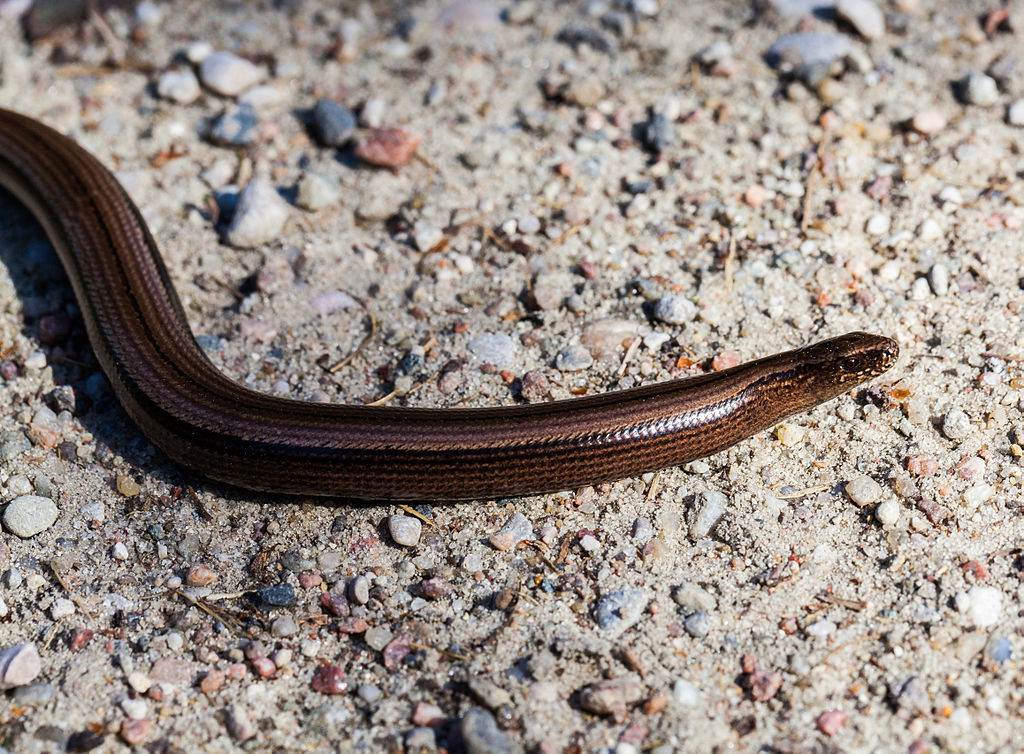
The presence of slow worms in garden ecosystems provides numerous benefits that extend beyond their aesthetic appeal as unusual wildlife. Their voracious appetite for slugs, snails, and various pest insects contributes significantly to natural biological control, reducing the need for chemical pesticides while protecting plant life. By tunneling through compost and soil, they create channels that improve aeration and drainage, enhancing microbial activity and accelerating decomposition processes. Their movement also helps disperse beneficial microorganisms and fungi throughout the compost, contributing to more efficient breakdown of organic matter. Additionally, slow worms serve as important prey items for higher trophic levels, including birds of prey and mammals, making them integral links in healthy food webs within urban and suburban green spaces.
Threats and Conservation Status
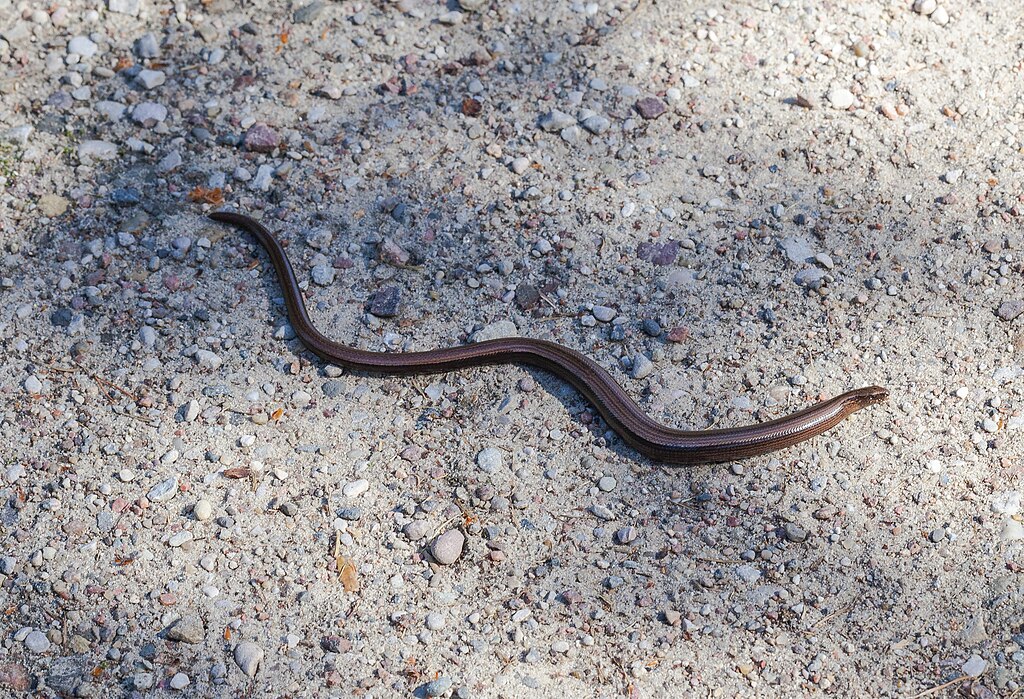
Despite their adaptability, slow worm populations face numerous challenges in the modern world. Habitat fragmentation and loss represent primary threats, as development reduces available green spaces and isolates populations. Domestic cats present a significant predation pressure, particularly in suburban environments where slow worm habitat overlaps with residential areas. The intensification of gardening practices, including the reduced use of compost heaps in favor of municipal composting systems and increased application of slug pellets and other pesticides, further impacts their survival. In recognition of these threats, slow worms receive legal protection in many European countries, including the UK where they’re protected under the Wildlife and Countryside Act 1981. This protection makes it illegal to intentionally kill, injure, or trade these animals, reflecting their conservation importance despite their relatively common status.
Creating Slow Worm-Friendly Compost Systems
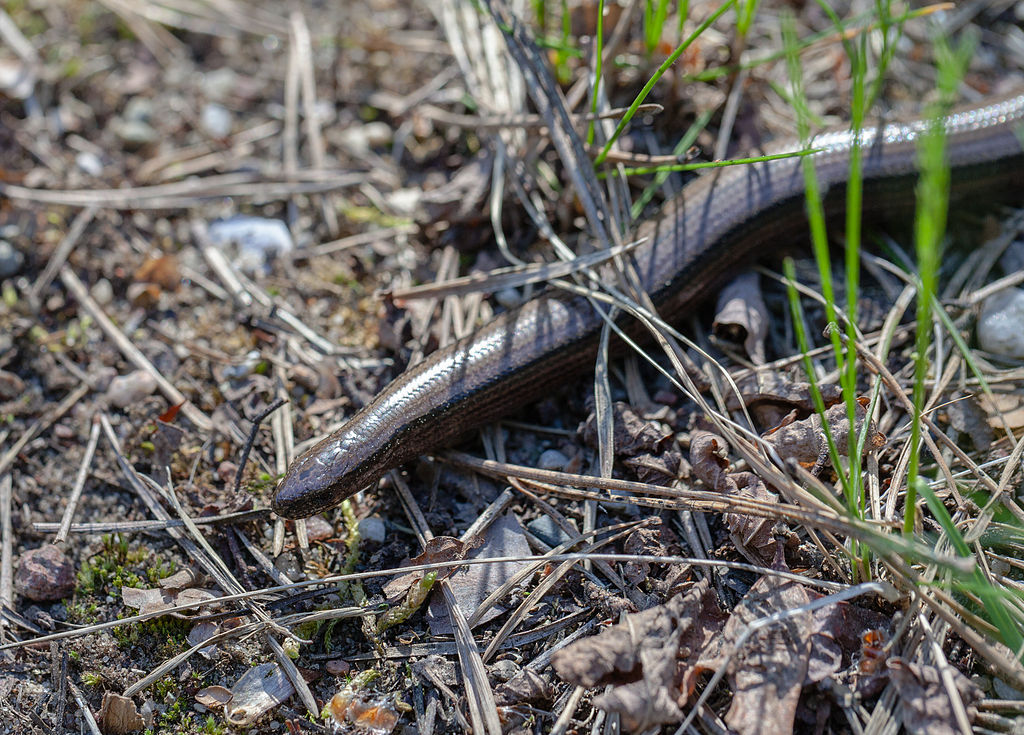
Gardeners wishing to accommodate and encourage slow worms can design compost systems with specific features to enhance their habitat value. Constructing multiple bins allows rotation of active composting while leaving mature heaps undisturbed, providing longer-term habitat stability for resident slow worms. Positioning compost heaps in locations that receive partial sunlight creates temperature gradients within the heap, allowing the reptiles to thermoregulate effectively by moving between warmer and cooler areas. Including structural materials like small branches or bamboo pieces creates permanent tunnels and void spaces that provide year-round shelter, even as the organic matter decomposes and settles. Perhaps most importantly, adopting a less frequent turning schedule—perhaps disturbing only portions of the heap at any time—prevents catastrophic habitat destruction and allows these shy animals to retreat to undisturbed sections.
Distinguishing Slow Worms from True Snakes

For gardeners encountering reptiles in their compost heaps, distinguishing between beneficial slow worms and potential snake species is important for appropriate response. Close observation reveals slow worms’ smooth, glossy appearance with scales that don’t appear prominent or keeled as they often do in true snakes. When moving, slow worms exhibit more rigid, less fluid locomotion, lacking the distinctive S-shaped movement pattern of most snakes. A defensive slow worm will often become stiff and may break its tail, which continues to wiggle as a distraction mechanism—behavior never seen in snakes. Perhaps the most reliable distinguishing feature is the head shape: slow worms have proportionally small heads that blend seamlessly with their bodies, while even small snakes typically display a distinct neck and more triangular head shape.
Cultural Significance and Folklore
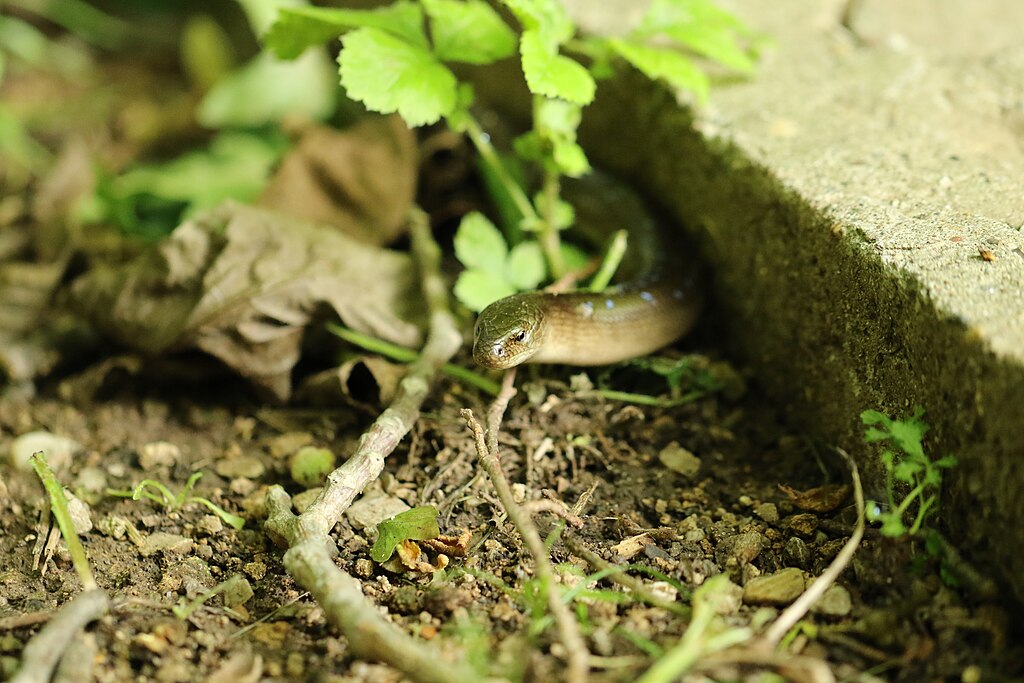
Throughout European history, slow worms have featured prominently in folklore and cultural beliefs, often with unfortunately negative connotations despite their harmless nature. In many rural traditions, they were erroneously believed to be venomous, leading to the common saying “slow worms are as deaf as adders and as venomous as vipers”—both claims entirely unfounded. Some agricultural communities believed that slow worms would suck milk from cows’ udders, a physical impossibility that nonetheless contributed to persecution. More positively, certain Celtic traditions viewed them as symbols of healing and renewal due to their tail regeneration abilities. In modern times, their cultural significance has shifted toward educational value, with slow worms frequently featured in nature education programs as examples of evolutionary adaptation and reptilian diversity that challenge common assumptions about reptile morphology.
Global Distribution and Related Species
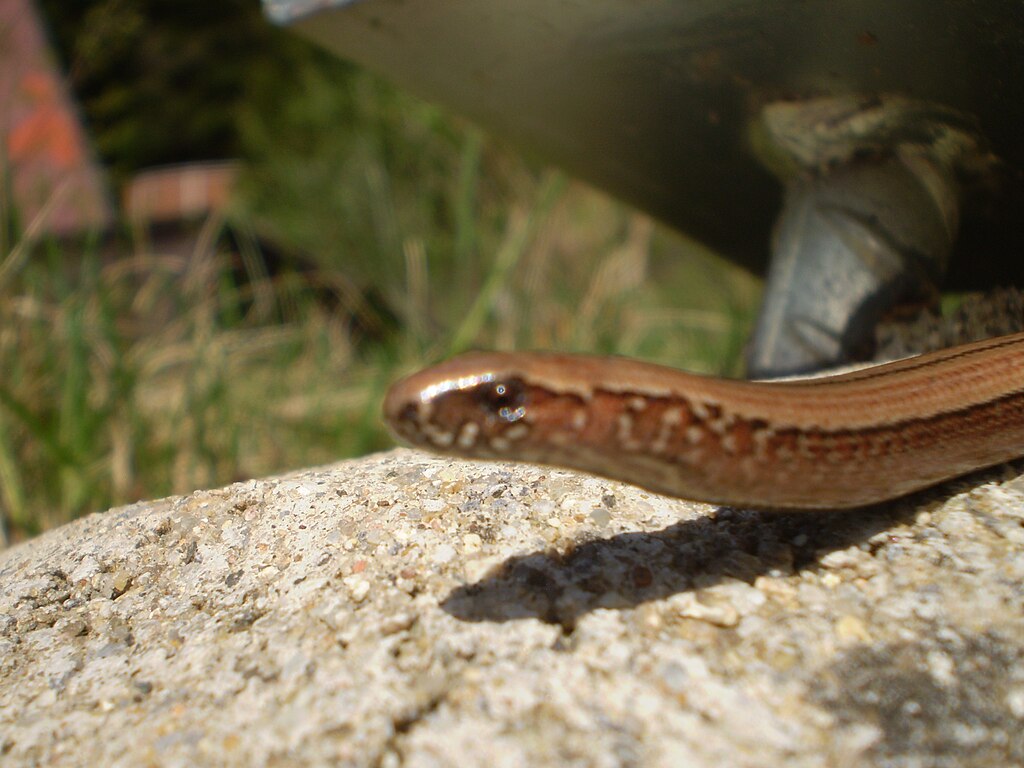
While the common slow worm (Anguis fragilis) is primarily distributed across Europe, extending from Scandinavia to the Mediterranean and eastward into parts of western Asia, related legless lizard species occupy similar ecological niches worldwide. The Iberian Peninsula hosts the distinct species Anguis fragilis colchica, while further east, the Eastern slow worm (Anguis colchica) extends through the Caucasus region. North America features its own convergently evolved legless lizards, including the slender glass lizard (Ophisaurus attenuatus), which similarly favors habitats with decomposing vegetation. Australia’s legless lizard family Pygopodidae represents yet another independent evolution of limb reduction, demonstrating how this body plan has repeatedly proved advantageous in specific habitats across different continents. The global distribution of these superficially similar but evolutionarily distinct animals highlights the phenomenon of convergent evolution in response to similar environmental pressures.
Observing Slow Worms: Tips for Gardeners

Patient gardeners hoping to observe these secretive reptiles can employ several strategies to increase their chances of encounters while minimizing disturbance. Early morning visits to compost areas, particularly after cool nights when slow worms may emerge to bask in the first warmth, often yield sightings as they absorb heat before becoming active. Placing flat objects like pieces of corrugated metal, slate, or wood near compost heaps creates artificial refuges that slow worms readily adopt and can be carefully lifted for observation. Approaching quietly and avoiding sudden movements is essential, as slow worms detect vibration readily and quickly retreat into deeper layers when disturbed. Maintaining a respectful distance and using binoculars for closer views allows observation without causing stress or triggering defensive behaviors. Photographing encountered individuals from a distance can help with identification and appreciation without handling these protected animals.
In conclusion, the slow worm represents a fascinating example of evolutionary adaptation, having developed a specialized lifestyle that includes tunneling through compost heaps. Despite their serpentine appearance, these legless lizards have carved out a unique ecological niche that benefits both themselves and human gardeners. By understanding and appreciating these remarkable creatures, we can better protect them and create garden environments that support biodiversity. The next time you turn your compost heap, consider doing so gently and in stages—you might be sharing your garden with these beneficial, secretive reptiles that have mastered the art of turning our waste into their wonderful habitat.

